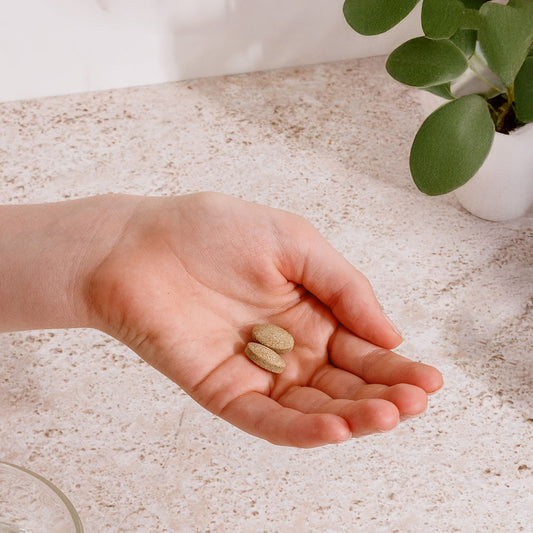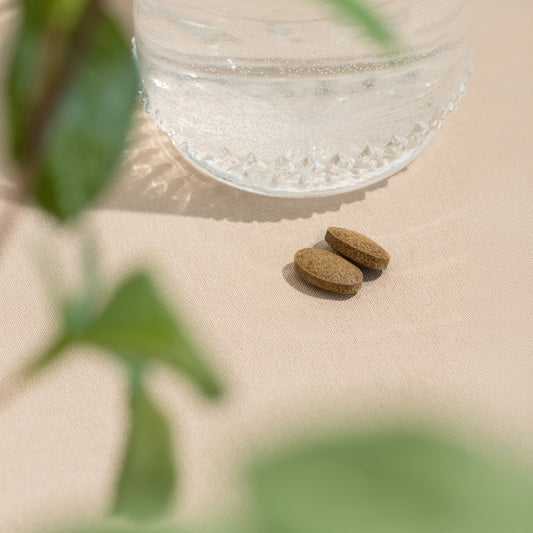Spring for Pitta
Optimize Your Health for Spring

Pitta's light, sharp, and hot nature is generally calmed by the heavy, gentle, and cool qualities of the spring. But pitta's liquid and oily qualities can be aggravated by the abundance of moisture, and as the spring season progresses, increasing heat can also disturb pitta.
As a pitta-predominant type, moisture and warmth will be the most important spring characteristics to balance. The following modifications to a typical springtime routine are designed specifically to support your constitution.
If you are not familiar with the basic tenets of a traditional springtime routine, you might benefit from first reading Banyan's more general Ayurvedic Guide to Spring.
Foods to Favor
In the spring, those with a predominantly pitta constitution will want to focus on incorporating foods that balance the wet and oily qualities of the season. And if the spring is particularly warm, it's important to soothe the excess heat with a pitta-balancing diet that is cooling and calming to the system.
- Balancing to both pitta and kapha, bitter and astringent foods like barley, beans, bitter greens, and lots of salads and vegetables will be among your best options this spring.
- Other foods to favor include apples, berries, pears, pomegranate, soaked prunes, raisins, amaranth, oat bran, dry oats, basmati rice, rice cakes, seitan, tapioca, ghee, goat's milk, light chicken or turkey meat, venison, popcorn, and sunflower seeds.
- While you will be able to tolerate more spices than usual in the early spring, favor fresh ginger over dried, and lean on those spices that pitta tolerates well: cardamom, cinnamon, coriander, cumin, fennel, mint, parsley, saffron, tarragon, turmeric, and vanilla.
- Of the recommended herbal teas, the CCF Tea (cumin, coriander, and fennel) will be your best choice.
Acceptable Seasonal Indulgences
This spring, you will probably tolerate some especially light or mildly heating foods that might be too much for you during the summer months: a spicy meal or some caffeinated tea. But, your very best choice for springtime indulgence will be sweets made from fresh fruit like baked apples, delectable prune bars, or a fruit crumble.
These foods are sweet enough to soothe pitta but light enough to support the body in its effort to cleanse and purify the system.
Foods to Minimize
- Sipping on honey and hot water may be fine for you on occasion, but doing so throughout the day would likely be a bit much.
- While some spice is okay at this time of year, monitor your use of especially heating spices like garlic, dried ginger, and cayenne pepper.
- Now is the time to start weaning yourself off of especially sour or heating foods like bananas, green grapes, grapefruit, lemon, pineapple, olives, tomatoes, brown rice, urad dal, hard cheeses, sour cream, red meats, and nuts.
- Doing so now will help to ensure that your system is at its best when you move into pitta season in the late spring and summer months.
Lifestyle Adjustments
If your nature is pitta predominant, give yourself permission to slow down and relish the spring. Focused intentions are great, but you will probably feel an even deeper benefit if you cultivate a light-hearted approach to life this season. The following lifestyle adjustments will help you make the most of the springtime.
Keep your perfectionism in check.
Pitta-types tend to approach all things with passion, intensity, and dedication. In excess, this energy can turn into perfectionism, or even self-criticism. Luckily, the softness of the winter lingers into spring and can be quite balancing for pitta's sharp drive and ambition.
This is a great time to experiment with taking the pressure off and even lowering your standards a little—especially when it comes to your own level of performance.
Incorporate a soothing self-massage practice.
A gentle abhyanga, or self-massage ritual, is a great addition to your morning routine. Sesame oil may be too heating for you, so try organic Sunflower Oil or Pitta Massage Oil instead. A dry rub or herbal powder massage will generally soothe pitta, as long as it doesn't cause you to overheat.
The dryness of a sauna can balance pitta's liquid and oily qualities, but if the weather is warming up, it may be too heating, so gauge the appropriateness of this practice for yourself—according to your local climate and your tolerance for heat.
Keep your exercise playful.
This is a good time to honor your inner athlete, but do so with a light heart and a sense of pleasure, rather than a drive to push your limits. And again, be careful not to overheat.
For a pitta-balancing yoga practice, incorporate plenty of standing poses, twists, and forward folds and begin to minimize inversions in preparation for the summer months. If you practice pranayama, Nadi Shodhana (Alternate Nostril Breathing) is a wonderful choice.
Prioritize rest and quality sleep.
Throughout your day, try to strike a balance between routine and play, focused attention and relaxation. This is a time of year when you might get away with retiring later at night, but if you find that you are too preoccupied—or too amped up—to sleep, try retiring around 10 p.m., or even a bit earlier.
For more sleep support, read An Ayurvedic Guide to Balanced Sleep.
More for You
Pitta Balancing Daily Routine
Adopting a daily routine is a very purposeful and enduring act of self-love. Each day, our routines provide us with a tangible opportunity to prioritize our own health and wellbeing, regardless of what else might be going on in our lives. Read on for specific practices for pitta-predominant individuals.
Pitta-Pacifying Yoga
A yoga practice for a pitta individual should encourage compassion, acceptance, relaxed effort, and be cooling in nature. Pittas can cultivate this by following some basic guidelines.






